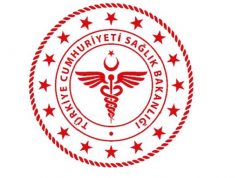British Columbia Üniversitesi’nde görevli bilim insanlarının yürüttüğü araştırma, Ciprofloxacin veya Cipro gibi florokinolon sınıfı antibiyotikleri kullananlarda, ana atardamar ve mitral yetersizlik gelişme olasılığının 2.4 kat arttığını gösterdi.
Sputniknews haberinde; Araştırma çerçevesinde florokinolon sınıfı antibiyotiklerin amoksisilin grubuyla kıyaslandığı, en yüksek riskin son 30 günlük kullanım içinde gözlendiği belirtildi.
Çalışma ekibinin lideri Mahyar Etminan, “Bu antibiyotik sınıfı çok işe yarar ancak özellikle topluluk enfeksiyonları olmak üzere çoğu vakada gerçekten gerekli değil. Yersiz reçete edilmesi hem antibiyotik direncine hem de ciddi kalp sorunlarına yol açabilir” değerlendirmesinde bulundu.
ABD Gıda ve İlaç İdaresi’nin (FDA) yan etkiler bilgilendirme sistemi verilerinin yanı sıra ABD’de özel sağlık sigortası şikayetlerinin yer aldığı veri tabanının kullanıldığı araştırmada hastaların yan etkiden 30 gün önce florokinolon sınıfı antibiyotik kullananlar, geriye dönük 31 ila 60 gün ya da 61 ila 365 gün içinde florokinolona maruz kalanlar olarak gruplandırıldığı belirtildi.
Araştırma dahil edilenlerin 12 bin 505’inde valvüler regürjitasyonu bulunduğu ve 125 bin 20’sinin de kontrol grubunda yer aldığı kaydedildi.
Çalışmanın ayrıntıları ‘Journal of the American College of Cardiology’ dergisinde yayımlandı;
Results:
There were 102 reported FQ-associated valvular regurgitation adverse events (AEs) and 6,099 reports with other drugs in the FAERS database. Based on these numbers, the authors reported an ROR of 1.45 (95% CI, 1.2-1.77), although they do not specify the number of nonvalvular AEs implicit in this calculation. RORs vary significantly for different FQs from a high of 2.87 (gatifloxacin) to a low of 0.73 (moxifloxacin). In the case-control study, there were 12,502 cases of valvular regurgitation (9,774 mitral regurgitation and 2,390 of aortic regurgitation) and approximately 125,000 control subjects. The adjusted RR with current FQ use was 2.40 (95% CI, 1.82-3.16) when compared to amoxicillin and 1.75 (95% CI, 1.34-2.29) when compared to azithromycin. The adjusted RRs were less significant for recent use and close to 1.0 for past use of FQs relative to both amoxicillin and azithromycin.
Conclusions:
This nested case-control study shows a stronger association between current FQ use and valvular regurgitation than that seen with two other antibiotics. This accompanies a disproportionality analysis done on an FDA database, which shows a ROR >1 for FQs as a whole, albeit with disparity between individual class members.
Perspective:
This article adds valvular regurgitation to the list of cardiovascular conditions potentially associated with FQ use. Mining of FDA and health claims databases allows for large sample size, but introduces the possibility of unmeasured confounders and limits conclusions regarding cause and effect. Guidelines regarding the use of FQs in patients with risk factors for or history of valvular regurgitation must await further, prospective studies.
https://www.acc.org/latest-in-cardiology/journal-scans/2019/09/09/15/29/fluoroquinolones-and-risk-of-mitral




















